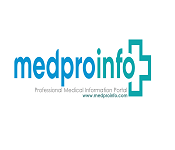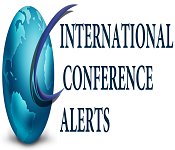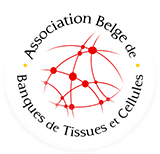Theme: Explore the concept of Tissue Repair, Restore & Regeneration
Tissue Repair 2019
About Tissue Repair and Regeneration Conference
We cordially welcome all the interested participants to our upcoming 10th International Tissue Repair and Regeneration Congress which is going to be held during June 13-14, 2019 at Helsinki, Finland. This includes a wide range of Keynote presentations, plenary talks, Symposia, Workshops, Exhibitions, Poster presentations.
Tissue Repair 2019 will discuss various disciplines involved in the pre-clinical research, conduct of Tissue Repair & Regenerative medicine. It will educate health care researchers about design, operation, organizing, research computing, regulatory aspects and reporting of Tissue Science & Regenerative medicine. It promotes better understanding by the general public about the importance of Tissue Engineering, Regenerative medicine in prevention, diagnosis and treatment of disease. This conference conduct presentations, distribute information, meet with current and potential scientists, make a splash with new Tissue engineering, Regenerative medicine, Tissue culture and preservation, Stem cell Therapy research developments, and receive name recognition at this 2-days event. World renowned speakers and the most recent techniques, developments, the newest updates in Tissue engineering, Regenerative medicine Research are hallmarks of this conference.
Why to Attend Tissue Repair Conference 2019 ?
10th International Tissue Repair and Regeneration Congress have the platform to fulfill the needs in the transformation of this science of hope, to serve promptly with solutions to all the needs. Tissue Repair 2019 will have participants across the world to discuss the Congress goal.
About Organizers
ME Conferences is one of the leading Open Access publishers and organizers of international scientific conferences and events every year across USA, Europe & Asia. Conference Series has so far organized 3000+ Global Events with over 600+ Conferences, 1200+ Symposiums and 1200+ Workshops on Medical, Pharma, Engineering, Science, Technology and Business with 700+ peer-reviewed open access journals in basic science, health, and technology.
Target Audience for Tissue Repair Conference 2019
- Gene Therapy Scientists
- Stem Cell Researchers
- Emeritus and Academic professors
- Cell Biologists
- Genetic scientist
- Molecular Biologists
- Regenerative Medicine researcher
- Business Entrepreneurs
- Drug Manufacturing Companies
- Stem cell Developers and Investigators
- Tissue Engineers
Scientific Sessions of Tissue Repair Conference:
Tissue Repair 2019 will encompass recent researches and findings in Tissue Repair and Regeneration technologies, stem cell therapies and transplantations and other advancements in stem cell research and Tissue science. Tissue Repair 2019 will be a great platform for research scientists and young researchers to share their current findings in this field of applied science. The major scientific sessions in Tissue Repair 2019 will focus on the latest and exciting innovations in prominent areas of Tissue science and stem cell research.
Track 1-Tissue Repair and Regeneration
Tissue repair denotes to the healing of damaged tissue and contains two important components - Regeneration and restore. In Regeneration, specialized tissues are replaced by the proliferation of surrounding undamaged specialized cells. In repair, misplaced tissue is replaced by granulation tissue which matures to form scar tissue. The stomach creates a new cell lining every five days (If the stomach linings will not change into new usually then, hydrochloric acid from the stomach juices would create a hole inside the stomach, which might cause death). Skin cell replaces itself in every 30 days. The red blood cells have an existence span of 120 days, and must then be replaced. Each of the distinctive tissues of the frame has its personal natural lifestyles cycle. It's far the goal of regeneration remedy to stimulate the process of self-renewal.
Track 2- Regenerative Therapy & stem cell therapy
Stem cell therapy is the use of stem cells to treat disease. Bone marrow transplantation is the most used stem-cell therapy, but some therapies derived from Umbilical cord blood are also in use. Research is proceeding to develop various sources for stem cells and to put on stem-cell treatments for Neurogenerative disease and conditions such as diabetes, heart disease, and other conditions. Stem-cell therapy has become controversial following developments such as the ability of scientists to isolate and culture embryonic stem cell to create stem cells using somatic nuclear transfer and their use of techniques to create Induced pluripotent stem cell.
Track 3-Applications of Stem cell in Regeneration
Stem cells are defined as the undifferentiated cells, having self-renewal capacity throughout the lifetime and giving rise to terminally differentiated cells of various cell lineages. Their differentiation pathway is unidirectional, passing through the stage of lineage and finally generating differentiated cells. Adult stem cell differentiation is traditionally believed to be restricted to the tissue in which the stem cells reside (hematopoietic stem cells generate blood cells, liver progenitor cells produce hepatocytes). Hematopoietic stem cells are the most thoroughly characterized adult progenitor cells, mostly because of their easy accessibility and use for transplantation to treat malignant disease.
Track 4- Translational & Regenerative Medicine
Translational Medicine aims to improve human health and longevity by determining the relevance to human Diseases. This Bridges across the discovery, development, regulation, and utilization spectrum. It may include application of research findings from genes, proteins, cells, tissues, organs, and animals, to clinical research in patient populations, all aimed at optimizing and predicting outcomes in specific patients.
Regenerative Medicine goes for helping the body to shape new tissue to replace lost ones. This will give curative treatment to conditions .The human body has an endogenous arrangement of recovery through foundational microorganisms, where undeveloped cells are discovered nearly in every kind of tissue. The thought is that upgrading of capacity is best proficient by these cells. Regenerative prescription involves the utilization of tissue designing and undifferentiated organism innovation.
Track 5- Translational Stem cell research
Translational Stem Cell Research opens with an overview of the latest in stem cell research, focusing on specific diseases and the treatment of burn victims. From a translational perspective, we outline the challenges that may vary across preclinical models for the evaluation of stem cell therapy in situations that require periodontal reconstruction and the safety issues that are related to clinical applications of human stem cells. Although clinical trials that use autologous periodontal ligament stem cells have been approved and have already been initiated, proper consideration of the technical, safety, and regulatory concerns may facilitate, rather than inhibit, the clinical translation of new therapies.
Track 6-Tissue Engineering & Bioengineering
Tissue Engineering is addressed to create functional tissues which include cells, scaffolds, and bioactive molecules. It is the development of biological substitutes that maintains, improves or restores tissue functions resulting in sidestepping the problems associated with tissue damage. In the present, it is treated with transplants, mechanical devices or surgical reconstructions, these three medical therapies have saved and improved countless patients’ lives with few associated problems. For example, transplantation in organs shows limitations such as transplant rejections and lack of donor to cover all the worldwide demand. Mechanical devices are not capable of accomplishing all the functions related to the tissue and also the prevention of progressive deterioration in patients. Thus it has informed that Tissue Engineering arises from the need to provide more definitive solutions to tissue repairs.
Track 7 -Tissue culture and Preservation
Appropriately preserved stem cells can be later used in the field of regenerative medicine for treating congenital disorders, heart defects etc. Cryopreservation of ovarian tissue would have many benefits for infertility treatment. A direct application of such a technique would be in overcoming infertility in cancer patients rendered infertile by harmful treatments such as chemotherapy and radiotherapy which indiscriminately destroy diseased as well as healthy cells. The ability to cryopreserve pre-implantation embryos from both animal and human sources has helped to overcome some of the practical concerns.
Track 8- Embryonic Development & Regeneration
Regeneration and development are intricately linked processes. Following injury and disease, many developmental pathways are reactivated in order to regenerate damaged tissues. Understanding these developmental mechanisms and how they are recycled in response to tissue damage can inform efforts to achieve regeneration in cases where it does not naturally occur (as with human limbs) and efforts to utilize embryonic stem cells to engineer cell types and tissues in vitro with an eye towards therapies.
Track 9- Nanotechnology in Tissue Engineering
Nanotechnology is currently being utilized for tissue engineering and regenerative medicine. Nanostructures can mimic tissue-specific bio environments by designing constructs with particular biochemical, mechanical and electrical properties. Biomimetic nanopatterns alone can direct the differentiation of stem cells without involvement of exogenous soluble biochemical factors. This regulation of cellular behavior by nanotechnology is one of many examples demonstrating the significant applications of nanoengineering in biomedicine. Therefore, tissue can be engineered by employing these nanostructures for enhanced cell adhesion, growth and differentiation. As the range of tissues being proposed for engineering increases, there is also a proportional increase in demand for new scaffold properties.
Track 10- Regeneration & Rehabilitation
Regenerative rehabilitation is the values as of rehabilitation and regenerative medicine, with the ultimate goal of developing innovative and operative methods that promote the restoration of function through tissue regeneration and repair. In order to provide an optimal microenvironment for healing tissues, physical therapists use directed therapy to maximize the productivity of the body's innate healing processes. Rehabilitation coupled with regenerative medicine surgeries has shown improved outcomes for tissue regeneration. With innovative findings from medical researchers in tissue engineering and cellular therapies, physical therapies play an important role in translating these findings.
Track 11- Anti Aging, Rejuvenation & Replacement
Stem cells are feasible to design and test interventions to slow aging and improve health and longevity. It is believed that stem cell failure contributes to a decline in health during aging; so the development of effective methods to induce and differentiate pluripotent stem cells via cell replacement therapy provides an exciting avenue for the treatment of degenerative age-related diseases. It is believed that the regenerative potential of these cells is due to their high differentiation and proliferation capabilities, paracrine activity and immune privilege. Therefore, the stem cells can be used for cell replacement therapy as a therapeutic intervention aimed at mitigating the effects of aging.
Track 12- Cancer Therapy
Tissue Engineering has evoked new hopes for the cure of failure of Organs and loss tissue by creating functional substitutes in laboratory. TE provides new technology platforms to study the mechanism of angiogenesis and tumour cell growth and potentially tumour spreading in cancer research. The synthesis of TE with innovative methods of molecular biology and stem-cell technology may help investigate and potentially modulate principal phenomena of tumour growth and spreading, as well as tumour-related angiogenesis. TE can be applied to cure the cancer in Breast, Skin, Melanoma, Bone, Prostate, Liver and brain.
Track 13- Biobanking
Bio banking is the process of storage of biological samples that can be a piece of human tissue taken from a healthy or a diseased part of the body, it can also be a sample of bodily fluid such as blood, urine or saliva. Tissue banking is the activity of processing, storage, and distribution of transplantable human tissues. Tissues retrieved from the human body are used to repair and or replace the diseased or lost tissues of living human body and have saved many precious lives. The common tissues used are cornea, skin, bones, cartilage, joints, heart valves, fascia, tendons and a human cadaver.
Track 14- Genetic Modifications of Cells and Tissue
An experimental technique which uses the genetic cell in the modification of the stem cells in the treatment or prevention of the disease is referred to as the combined Gene and Stem cell therapy. The therapy in general influences the course of different genetic and multi factorial diseases at the DNA/RNA level. The stem cells used in the gene therapy is a valid one which has a complex consequence for treating a variety of diseases, where most don’t have a cure.
Track 15- Biological Tissue Substitute
The repair or replacement of damaged skins is still an important, challenging problem. Immune acceptance and long-term existence of skin grafts represent the major problem to overawe in grafting given that in most situations auto grafts cannot be used. The rise of artificial skin substitutes provides alternate treatment with the ability to diminish the dependency on the growing demand of cadaver skin grafts. Over the years, considerable research efforts have focused on strategies for skin repair or permanent skin graft transplantations. Accessible skin substitutes include pre- or post-transplantation treatments of donor cells, stem cell-based therapies, and skin counterparts composed of bio-engineered cellular skin substitutes. However, skin substitutes are still prone to immunological rejection, and as such, there is currently no skin substitute available to overcome this phenomenon. This emphasis on the mechanisms of skin rejection and tolerance induction and outlines in detail current available tactics and alternatives that may allow achieving full-thickness skin replacement and repair.
Market Analysis of Tisuue Repair and Regeneration Conference
In Tissue Repair and Regeneration, Regenerative medicines play a major role. Regenerative medicines have the ability to repair, replace, and regenerate tissues and organs affected due to injury, disease. These medicines are capable of restoring the functionality of cells & tissues and are applicable in a wide range of degenerative disorders developing number of surgeries fueled by maturing populace and rising injury cases are expected to move request for s tissue repair gadgets and in turn give development openings for manufacturers. In expansion, the expanding number of items propelled and industry solidification are anticipated to fortify the tissue repair showcase over the estimate period. For occurrence, presentation of organic unites by driving producers is picking up clutch. Organic joins diminish the recuperation period and have less difficulty related to dismissal, which in turn is expected to boost request for these items over the estimate period. Developing number of patients enduring from sports related wounds is another calculate which is anticipated to advance tissue repair showcase development .Tissue Engineering is an inter corrective field that applies the principles of engineering and life sciences toward the development of biological substitutes that restore, maintain, or improve tissue function or a whole organ. Currently it has emerged as a rapidly diversifying field with the potential to address the worldwide organ shortage issue and comprises of tissue regeneration and organ replacement.
Importance & Scope:
A innovative set of tissue replacement parts and implementation strategies had shown a great uprising in Tissue engineering field. Cells placed on or within the tissue constructs is the most common methodology in tissue engineering. Regenerative medicine is not one discipline. It can be defined as a therapeutic intervention which “replaces or regenerates human cells, tissues or organs, to restore or establish normal function” and deploys small molecule drugs, biologics, medical devices and cell-based therapies. Regenerative Medicine-2015 is an captivated a locality of conscious discussions on novel subjects like Tissue Regeneration, Materials & Designs for Tissue Engineering, Stem Cell–Tools to Battle Cancer, Bioreactors in Tissue Engineering, Regeneration & Therapeutics, Cord Blood & Regenerative Medicine and Clinical Medicine. The two days event embeds a firm relation of upcoming strategies in the field of Tissue Repair & Regeneration with the scientific community. The theoretical and applicable knowledge shared, will also foster organizational collaborations to nurture scientific accelerations. We bring together business, creative, and technology leaders from the tissue engineering, marketing, and research industry for the most current and relevant.
Glimpse at Market of Regenerative Medicine:
There are strong pricing pressures from public healthcare payers globally as Governments try to reduce budget deficits. Regenerative medicine could possibly save public health bodies money by reducing the need for long-term care and reducing associated disorders, with potential benefits for the world economy as a whole. The global market for tissue engineering and regeneration products reached $55.9 billion in 2010, is expected to reach $59.8 billion by 2011, and will further grow to $89.7 billion by 2016 at a compounded annual growth rate (CAGR) of 8.4%. It grows to $135 billion to 2024.The contribution of the European region was 43.3% of the market in 2010, a value of $24.2 billion. The market is expected to reach $25.5 billion by 2011 and will further grow to $36.1 billion by 2016 at a CAGR of 7.2%. It grows to $65 billion to 2024.
The growing rate of Cell Therapy, TE, Gene Therapy and Small molecules over the Years:

Global data about Stem cell therapy, TE and Gene Therapy:

Target Audience:
Industry 40%
Academia 50%
Others 10%
List of Major Tissue Science Society Worldwide:
USA & AMERICA
- New York Stem Cell Foundation
- American Academy of Anti-Aging Medicine
- American College of Medical Genetics (ACMG)
- American Board of Medical Genetics and Genomics
- American Society of Gene Therapy (ASGT)
- Canadian College of Medical Geneticists
- Canadian Collaborative Group for Cancer Genetics (CCGCG)
EUROPE
- European Society for Artificial Organs
- European Association of Tissue Banks
- Association of Genetic Nurses and Counsellors (AGNC), United Kingdom
- British Society for Genetic Medicine (BSGM)
ASIA PACIFIC & MIDDLE EAST
- The Japanese Society for Tissue Engineering
- Korean Tissue Engineering and Regenerative Medicine Society
- Genetics Society of Korea (GSK)
- Korean Society of Human Genetics
- Japan Society of Gene Therapy
Bioactive glass implant for Bone infection
We all know that Osteomyelitis is an infection of the bone, a rare but serious condition. Bones can become infected in a number of ways like the Infection in one part of the body may spread through bloodstream into the bone can cause severe infections of bone, fracture or a surgery may expose the bone infection.
A latest study has been developed to find a one-step solution for Osteomyelitis which kills the bacteria and at the same time promoting bone growth without using any antibiotics. The result is an implant made from bioactive glass (a type of glass used for bone repair which embedded with copper particles). The copper-doped bioactive glass in a porous scaffold implant attracts blood vessels and bone cells, which accelerates the process of bone repair. The copper ions in the implant also prevent the bacteria growth. The ability of a single implant to improve blood flow and enhance bone healing as well as inhibit infection without antibiotic treatment is a significant advancement over most existing treatments.
Osteomyelitis can result from broken bones, deep puncture of wounds and even extreme tooth decay. Existing treatments have a failure rate of around 30 per cent, with the most severe cases leading to amputations and even death. The potentially improving outcomes for this rare but serious condition, the RCSI team also believes other infections could be treated using bioactive glass doped with different metals.
Reversible antiplatelet therapy fights cancer metastasis and clotting
Now a days heart disease, sepsis, stroke and cancer collectively cause the greatest number of deaths worldwide and all of them are associated with activated platelets. Various antiplatelet drugs have been discovered to fight these diseases but their effects are non-reversible and patients taking these drugs are at risk of uncontrolled bleeding if got injured. Also, if these patients need to undergo surgery, they must stop their treatment for up to a week prior to the procedure, which raises their risk of developing blood clots.
A new Drug free, reversible antiplatelet therapy could reduce the risk of blood clots and potentially prevent cancer spread. This approach involves modification of human platelets to create “decoys” which are capable of binding to some cells but will not aggregate the normal platelet function. To create decoy platelets, the researchers used a detergent treatment & centrifugation to strip the natural human platelets. Then they removed basic activation and aggregation abilities of the platelets. Now these decoy platelets became about one-third the size of a regular platelet while retaining a majority of adhesion receptors on their surface. This structure allows them to bind to other cells in the bloodstream i:e; cancer cells but they don’t become active during the blood clotting process. The researchers found that the decoys don’t show any typical clotting behaviours and when added to human blood within the device, whereas the normal platelets showed a reduced ability to aggregate and create a clot by binding to vessel’s walls. Moreover, in a model of metastasis, there was a significant reduction in the burden of metastatic tumours when cancer cells were introduced concurrently with platelets and decoys.
Zinc may help stop growth of Esophageal cancer
Esophageal cancer is the sixth leading cause of human cancer deaths around the world, with an estimated more than 160,000 people dying from esophageal cancer in 2017-2018.Zinc is very much essential for the body to grow and function properly. It is typically obtained in a balanced diet from a variety of foods, including red meat, spinach, poultry, beans, nuts & whole grains. Zinc is an important element in many proteins, including enzymes and so an absence of zinc can prevent cells from proper functioning. It is particularly important for normal immune response as well as wound healing.
Zinc deficiency is common among patients suffering with esophageal cancer, indicating that good levels of zinc may protect against the disease. Previous studies have shown that zinc can protect the esophagus from cancer. Now scientists have discovered that zinc can selectively prevent esophageal cancer cells from dividing and growing. Interestingly, zinc does not affect the growth and function of healthy esophageal epithelial cells. It is therefore hoped that this effect of zinc could provide the basis for the development of more effective cancer prevention and treatment strategies. Zinc impedes overactive calcium signals in cancer cells, which is absent in normal cells and thus zinc selectively inhibits cancer cell growth and proliferation.
Conference Highlights
- Tissue Repair and Regeneration
- Tissue culture and Preservation
- Translational & Regenerative Medicine
- Biobanking
- Biological Tissue Substitute
- Regeneration and Rehabilitation
- Regenerative Therapy & stem cell therapy
- Applications of Stem cell in Regeneration
- Translational Stem cell research
- Tissue Engineering & Bioengineering
- Embryonic Development & Regeneration
- Nanotechnology in Tissue Engineering
- Anti Aging, Rejuvenation & Replacement
- Cancer Therapy
- Genetic Modifications of Cells and Tissue
To share your views and research, please click here to register for the Conference.
To Collaborate Scientific Professionals around the World
| Conference Date | June 13-14, 2019 | ||
| Sponsors & Exhibitors |
|
||
| Speaker Opportunity Closed | Day 1 | Day 2 | |
| Poster Opportunity Closed | Click Here to View | ||
Useful Links
Special Issues
All accepted abstracts will be published in respective Our International Journals.
- Journal of Tissue Science & Engineering
- Journal of Cell & Developmental Biology
- Journal of Stem Cell Research & Therapy
Abstracts will be provided with Digital Object Identifier by




























